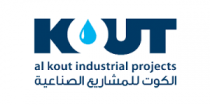Global Ethyl Alcohol Market (2021 to 2026) - Growth, Trends, COVID-19 Impact and Forecasts - ResearchAndMarkets.com
The "Ethyl Alcohol (Ethanol) Market - Growth, Trends, COVID-19 Impact, and Forecast (2021 - 2026)" report has been added to ResearchAndMarkets.com's offering.
The ethyl alcohol (ethanol) market size is projected to register a CAGR of over 5% during the forecast period (2021-2026).
Companies Mentioned
- Advanced BioEnergy LLC
- The Andersons Inc.
- ADM
- Braskem
- bp PLC
- Cargill Incorporated
- Flint Hills Resources
- Green Plains Inc.
- INEOS
- HPCL Biofuels Limited
- Kirin Holdings Company Limited
- LyondellBasell Industries Holdings BV
- Mitsubishi Chemical Corporation
- Alto Ingredients Inc.
- SABIC
- Sasol Limited
- POET LLC
- Solvay
- Valero
Key Market Trends
Fuel Segment to Dominate the Market Demand
- Ethanol is gaining support for application as fuel, owing to its renewable source and eco-friendliness with lower emissions. Ethanol has a higher octane number than gasoline, providing premium blending properties.
- Low-octane gasoline is blended with 10% ethanol to attain the standard 87 octane. Carbon monoxide production from ethanol fuel is significantly lower when compared to gasoline engines.
- Moreover, for the past several years, refiners have been adding ethanol to fuel, as it burns cleaner than pure gas, which helps in cutting the carbon footprint. Additionally, the use of ethanol as a fuel helps to reduce oil dependency.
- According to the Ministry of Petroleum and Natural Gas, India, the country has preponed the target of achieving 20% ethanol-blended fuel by five years and now to complete the target by 2025. The country needs 4 billion liters of ethanol for 10% ethanol blend, and for 20% ethanol blend, the country needs 1,000 crore liters of ethanol, which will cost approximately INR 65,000 crores.
- European countries are majorly using 5% ethanol-blended fuel. The region is focusing on reducing the carbon dioxide emission from transportation through 10%-20% ethanol blending based on the countries' infrastructure.
- In California, ethanol replaced methyl tertiary butyl ether (MTBE) as a gasoline component. E10, one of the most common blends, contains 90% gasoline and 10% ethanol in order to oxygenate the fuel and reduce emissions.
- In Brazil, fuel ethanol consumption is driven largely by an ethanol blending mandate and lower prices relative to gasoline. However, the country's fuel ethanol prices are not competitive with fuel ethanol from the United States, primarily on account of higher agricultural feedstock costs, especially along with the Brazilian coastal areas.
North American Region to Dominate the Market
- The North American region dominated the global market share. Stringent regulations toward reducing the usage of fossil fuels and rising demand from the food processing industry have been driving the demand for ethanol in the region.
- The government in the countries such as the United States, Canada, and Mexico, have been focusing on reducing the usage of fossil fuels and the pollution caused by them. In this regard, the region has been resorting to ethanol-blended fuels, with ethanol being a cleaner resource, which serves as one of the major factors driving the growth of the ethanol market in the region.
- According to Renewable Fuel Association, the United States produced 15.8 billion gallons in 2019, out of which 90% of ethanol was exported and the rest 10% was domestically utilized.
- Additionally, in 2019, the Japanese government's biofuel policy allowed the use of the US-based corn ethanol to be used up to 44% for the production of ethyl tert-butyl ether, additves used in petrol to improve combustion, impacting the demand for ethyl alcohol.
- According to the Mexican Chamber of Cosmetic Products (CANIPEC), the Mexican cosmetics market was valued at around USD 10 billion in 2019 and held the second position in the Latin American market and 11th in the world. Growing demand for premium skin care products, along with the need for a better lifestyle, is driving the market for personal care in the country, positively impacting the demand for ethyl alcohol.
Key Topics Covered:
1 INTRODUCTION
2 RESEARCH METHODOLOGY
3 EXECUTIVE SUMMARY
4 MARKET DYNAMICS
4.1 Drivers
4.1.1 Rising Demand for Ethanol as Biofuel
4.1.2 Increasing Demand for Ethanol in the Food Processing Industry
4.1.3 Growing Use in Beer Production
4.1.4 Stringent Government Policies to Restrict the Use of Fossil Fuels
4.2 Restraints
4.2.1 Increase in Awareness About the Ill Effects of Alcohol Consumption
4.2.2 Advent of Hybrid Electric Vehicles
4.2.3 Impact of the COVID-19 Outbreak
4.3 Industry Value Chain Analysis
4.4 Porter's Five Forces Analysis
4.5 Import Export Trends
4.6 Price Trends
5 MARKET SEGMENTATION
5.1 Grade
5.2 Purity
5.3 Application
5.4 Geography
6 COMPETITIVE LANDSCAPE
6.1 Mergers and Acquisitions, Joint Ventures, Collaborations, and Agreements
6.2 Market Share/Ranking Analysis
6.3 Strategies Adopted by Leading Players
6.4 Company Profiles
7 MARKET OPPORTUNITIES AND FUTURE TRENDS
7.1 Surging Demand to Produce Ethanol from Corn and Sugar
For more information about this report visit https://www.researchandmarkets.com/r/ig5dc5
View source version on businesswire.com: https://www.businesswire.com/news/home/20210624005697/en/




